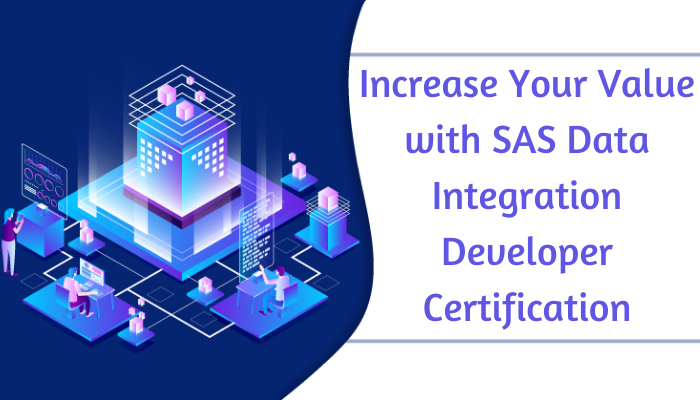It is a well-known fact that businesses today make significant amounts of data in their everyday operations. A typical business uses hundreds of applications and various other on-premise systems for storing enterprise data. It is produced by marketing, sales, financial transactions, production activities, research and development, and customer service. Data is one of the essential elements using which today’s businesses are thriving. SAS Data Integration Developer (DI) provides an efficient tool for visual designing. It works irrespective of any data source, platform, or application and allows to build, complete and handle data with ease. It also invents the changes that are likely to occur during a Data Integration Developer process. It captures the data from any source and displays it quickly to the users.
For SAS users leveraging the platform for SAS Business Analytics to collect, store, and restore data in preparing for reporting and analysis. You should be able to define the architecture of the program for SAS Business Analytics, author Metadata for Source and Target Data, create Metadata for Target Data and Jobs, work with Transformations, work with Tables and Table Loader Transformation, work with Gradually Changing Dimensions, define Generated Transformations, and expand Jobs.
What Is SAS Data Integration Studio?
SAS Data Integration Studio is a visual design tool for creating, implementing, and maintaining Data Integration Developer processes regardless of data sources, applications, or platforms. Through its metadata, SAS Data Integration Studio gives a single point of control for managing the following resources:
- Data sources, from any platform available to SAS and from any format that is available to SAS.
- Data targets any platform that is accessible to SAS and to any format that SAS supports.
- Processes specify how data is extracted, transformed, and loaded from a source to a target.
- Jobs that make a set of sources, targets, and processes (transformations).
- Source code that SAS Data Integration Studio generates.
- User-written source code.
What Is the Purpose of Data Integration Developer?
We hope you have got the hang of DI Developer with the examples and methods. Now, we will move on to its purpose. While it is pretty clear why every business requires a Data Integration Developer, here is a detailed explanation of the importance of a Data Integration Developer to technical and business practices.
1. Decrease Data Complexity
A typical business run using hundreds of applications and internal systems. Among those hundreds of applications, there could be thousands of interfaces. This web of networks and connections can immediately get you tangled. With a DI Developer plan, this web of networks and links can be quickly overcome. You will manage complexities, streamline the connections, and make standard data delivery to any system easy.
2. Make Data More Available
Integrating and storing data into a single platform makes it easy for the employees or associates to recover, scrutinize, and analyze data. When data is readily available, it becomes easy for the project managers to integrate any information they want into their projects, have the data up-to-date, and share results. This availability of data all the time is the key to knowledge-sharing, innovation, and collaboration.
3. Easy Data Collaboration
With accessibility comes greater collaboration. A team will now be able to help more efficiently thanks to way to relevant data. Alliance wants to share information, and with the ease of sharing among the internal teams, projects can be carried out more smoothly.
4. Smarter Business Decisions
Data Integration Developer means transparent business processes within the enterprise. Integrated data provides people the flexibility to use data in different internal systems in whatever way they want. This allows them to get data clearly, so they do not have to hit and try. Therefore, decisions regarding projects and business processes can be made quickly and smartly.
5. Data Integrity
Data Integration Developer helps in cleansing and approving the data that you are using. Businesses want their data to be sound, free of errors, duplication, and differences. A proper integration strategy can assist in making the data more meaningful.
Final Words
This is everything you require to know about Data Integration Developer. In conclusion, Data Integration Developer benefits everything from real-time information delivery to data improvement, customer data analytics, and business intelligence. So, it can be said that the original application case of the Data Integration Developer solution is the management of customer and business data.







